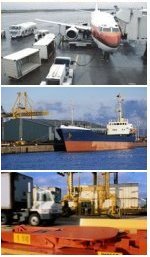

 |
 |
 |
Articles & Information<<Back to Articles/Information Index>> TARIFF CONCESSION ORDERS CHANGE OF PRACTICE IN TCO INTERPRETATION - BY LOUIS GROSSThe recent decision in STI Tyres and CEO of Customs (13th of November 2009) has provided another dimension in terms of the methods available for the interpretation of a TCO to see what goods qualify under the terms of that TCO. The TCO in question in this case read as follows: TYRES, OFF-ROAD, MOTOR CAR CIRCUIT OR DRAG RACING, pneumatic, with tyre marking having reference to the following features:
As it will be appreciated this TCO on its reading is clearly ambiguous with at least three possible interpretations namely:
The problem arose because it was originally a TCO designed for racing tyres, but Customs in their wisdom decided to add the word "off-road". This then led to the situation where there was an interpretation possible that the TCO extended to off-road tyres ie the type of tyres that are used on four wheel drive vehicles. This interpretation was not accepted by the Tribunal. They found that the TCO was ambiguous and on that basis said that they were entitled to have reference to extrinsic materials. In this instance, the Tribunal considered the "stated use" as set out in the original TCO application. It is to be noted that this course of conduct taken by the Tribunal was in fact done with the encouragement of Customs. One could observe that Customs are often inconsistent with their use of extrinsic materials seeming to be more influenced by what is advantageous to them on the day rather than abiding by any set principle. We make this observation because in the past, as you will no doubt will be aware, it has been accepted practice that a TCO must be interpreted simply based on its actual words and no reference can be made to the intentions of the original applicant. There are a number of cases that support that proposition. The Tribunal, however, made no reference to those earlier cases and simply accepted the Customs proposition that it can have reference to the stated use. In addition, the Tribunal further noted that at the time of original TCO application there was a local manufacturer of off-road tyres. The Tribunal therefore concluded that a TCO could not have been made at that time for off-road tyres as there where substitutable goods manufactured in Australia at that time. Again, this is a novel approach that has not occurred previously. This case appears to open the door to both Customs and importers to make reference to the original TCO application if it is going to assist their interpretation of whether goods do or do not meet the terms of an existing TCO. We would also add that whilst the importer did not succeed in having its goods covered by the TCO, it did win a major concession from Customs who agreed the relevant tyres were covered by Item 53C. Thus the duty rate went down from 10% to 5%. |
|
|
Home |
Our Services |
Our People The information you obtain at this site is not, nor is it intended to be, legal advice.
Copyright ©2007 by Gross & Becroft lawyers . All rights
reserved. |